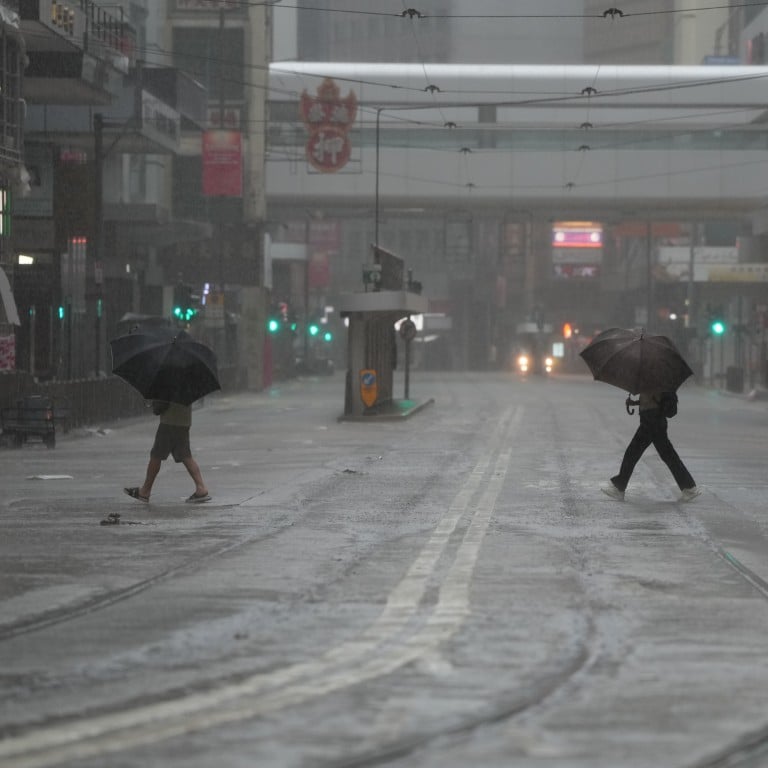
Hong Kong sees room for insurers to grow market for catastrophe bonds as climate crisis spurs record losses
- Climate risk creates opportunities for the insurance industry, and there is growing demand for alternative risk-transfer tools, Chief Executive John Lee says.
- A high frequency of catastrophic events contributed to worldwide losses surpassing US$100 billion for a fourth straight year in 2023: Swiss Re
Hong Kong could establish itself as a hub for global insurers and supranational organisations to raise funds through catastrophe bonds to manage their exposure to losses linked to natural disasters like earthquakes and typhoons, experts said.
This is in view of the increasing frequency of extreme weather events worldwide and the ensuing losses that have risen to an all-time high this year, according to data published by Swiss Re. The city itself has had to contend with such occurrences, including the once-in-500-years rainstorm in September in the aftermath of Typhoon Saola.
“Climate risk creates opportunities for the insurance industry,” John Lee Ka-chiu, the city’s chief executive, said at the Asian Insurance Forum on Friday. “Hong Kong is in a strong position to realise those opportunities for the insurance sector in response to the climate crisis. There is growing demand for alternative risk-transfer tools.”
Catastrophe bonds, also known as cat bonds, are insurance-linked securities typically sold by insurers or reinsurers to share risks associated with exceptional weather events. Supranational organisations like the World Bank have also sold them, with proceeds used to fund mitigation efforts in developing countries ravaged by such disasters.
About US$560 million has been raised via the issuance of cat bonds in Hong Kong’s financial market since 2021. The World Bank raised US$350 million from a three-year cat bond in March, which was the first such product to be listed in Hong Kong. The money was used to help protect the government of Chile against the financial impact of earthquakes.
“It is amazing to have the catastrophe bond listing in Hong Kong, which was just the beginning,” Michael Bennett, head of derivatives and structured finance at the World Bank, said at the forum. “Hong Kong has the capital to be a provider of both insurance and capital-market sides. We are excited to see that development.”
Saola-related rainstorm sparked Hong Kong’s second-highest insurance claims
While the World Bank appreciates Hong Kong’s efforts to promote cat bonds and other insurance developments, more investor education is needed to encourage buyers of such insurance products and grow the market, given the penchant among local investors for high-risk, high-return investments.
Cat bonds, in contrast, are riskier and thus offer higher returns, which could be suitable for local investors, he added.
Tony Gallagher, Asia-Pacific CEO at Guy Carpenter, a global insurance broker, agrees that Hong Kong could be a successful centre for cat bond offerings. The city’s property and car owners may not have sufficient cover against natural disasters, given recent data.
“Hong Kong had heavy rain a few months ago, but amazingly the insurance loss is actually relatively small when compared with other markets,” Gallagher said during a panel discussion at the forum.
The local insurance industry received HK$1.9 billion (US$243.6 million) of claims related to damage caused by a black rainstorm and Typhoon Saola in September. Claims related to property damages made up 86 per cent of them while 9 per cent arose from motor insurance, according to the Insurance Authority.

Only about 30 per cent of car owners had comprehensive coverage, while the rest had policies that did not protect against flooding, some industry executives said.
Meanwhile, Gallagher said opportunities exist for Hong Kong to develop its capability in cybersecurity insurance, which protects against events such as hacking and system failures.
“Globally, this business is growing enormously,” he said. “In Asia, it is relatively small in Hong Kong now. In America and Europe, it is a billion-dollar business. It is an opportunity for Hong Kong to develop cybersecurity insurance products in the next five to 10 years.”


